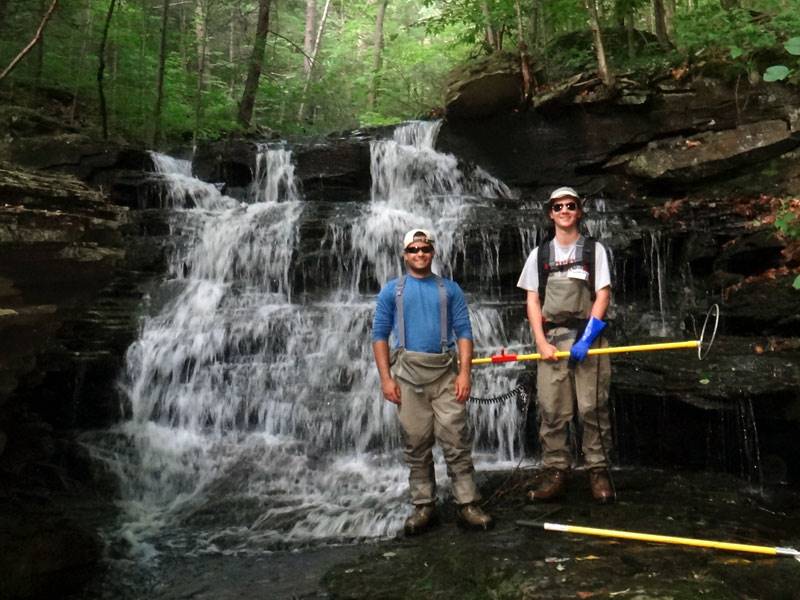Unassessed Waters Initiative Finds Trout in Overlooked Streams
 (Credit: Bucknell University)
(Credit: Bucknell University)Streams across the Midwest used to run plentiful with trout, but pollution in recent decades has led to population declines as the previously hospitable habitats are no longer suitable. Acid rain, runoff and other forms of pollution have acidified freshwater bodies leading to variations in the ideally basic waters.
In Pennsylvania specifically, streams with higher acidity are not compatible with many native species’ needs. The effects are evident from the distribution of fish like trout, which are uncommon in highly polluted waterways but can be found more easily in waters with a more basic pH. Beyond acidity, temperature appears to be another critical factor for trout.
Tallying Trout
Understanding both of these factors and where acidity and temperature variances are most extreme will help local resource agencies better predict and assess trout populations. Tallying trout paired with water quality monitoring allows scientists to report on current concentrations and identify what levels are best.
“The state’s interested in saving fish, and as a biologist, I’m interested in biodiversity,” said Steve Jordan, professor of biology at Bucknell University and leader of the project that took place in the summer of 2014. He and students Miles Silva and Riley Schwengel made it out to more than 40 streams for the work. “About half of the streams we studied had no fish because they were too warm.”
Aside from temperature, the team also measured the pH and conductivity of the streams with handheld meters. Additionally, they used an acid titration method to measure alkalinity. Jordan says that each of these parameters is important to consider in determining the ideal habitat.
Where to Find Trout in Pennsylvania
“In the streams with a pH near basic, they (trout) were good. But we didn’t have any fish in acidic springs due to acid rain,” said Jordan. Trout were not found in streams with temperatures higher than 20 degrees Celsius. Instead, the ideal temperature seems to be just below 18 degrees, according to Jordan.
A well-known fact amongst anglers, the study confirmed that trout can live near coldwater inputs flowing into the Susquehanna River. “A lot of trout are living at the intersection of the big river and small streams,” said Jordan. “That’s probably a very important habitat for them.”
And while the findings are valuable for Pennsylvania trout, the work was also good for Jordan’s students.
“I must confess that a lot of this for me was driven by giving my students professional opportunities to get their hands dirty and to get them invested in the work,” said Jordan. “The state has invested lots of time and money, and people are interested in the data.”
Conclusion
The findings of Jordan and others’ research will continue to help the Pennsylvania Fish & Boat Commission’s Unassessed Waters Initiative, which is looking to document all 86,000 miles of the state’s streams.
As of 2019, Trout Unlimited reported that electrofishing crews had found wild trout in about 40 percent of the unassessed waters sampled in Pennsylvania. The 2019 report states that more than half of Pennsylvania streams have yet to be surveyed, meaning that the initiative will continue, with Trout Unlimited sending out crews to assess more than 150 streams each year.


0 comments